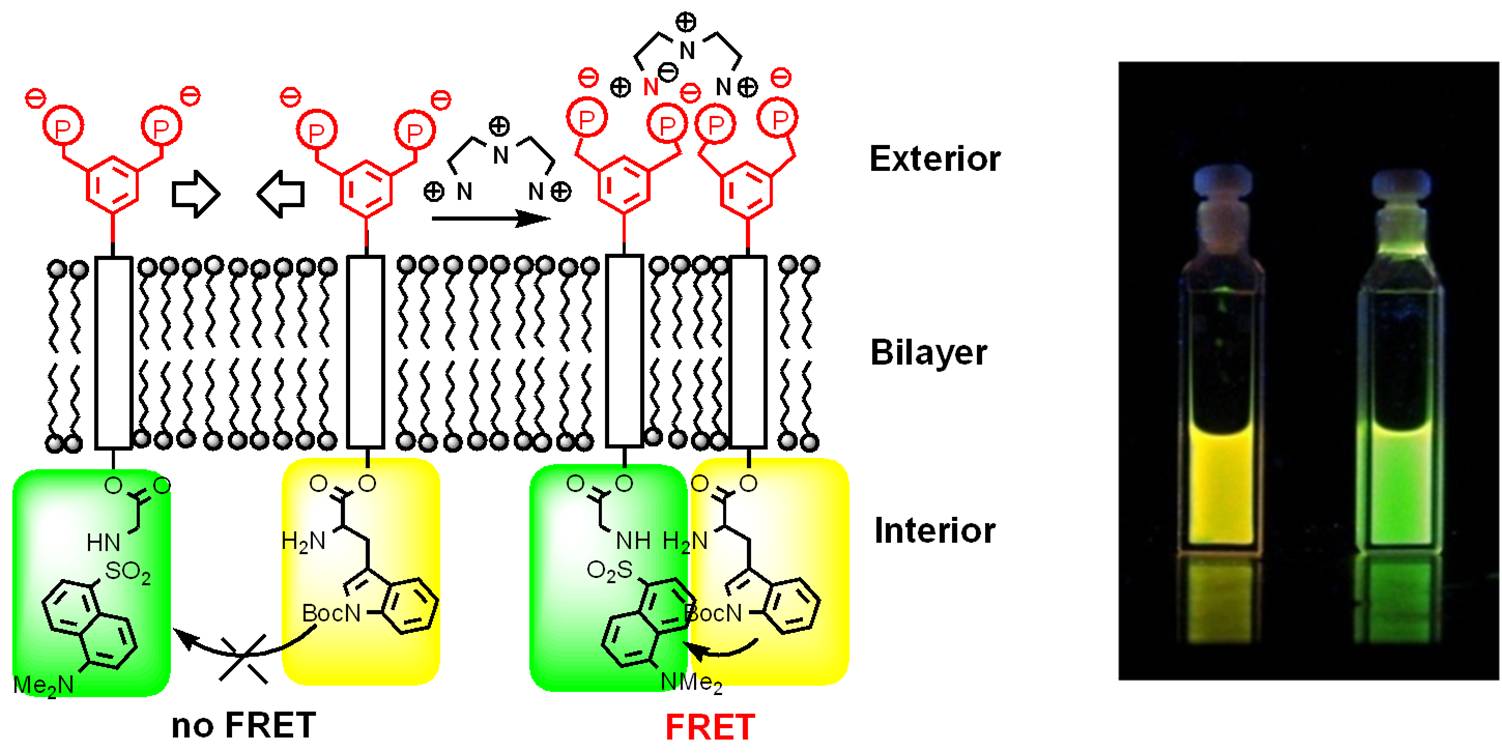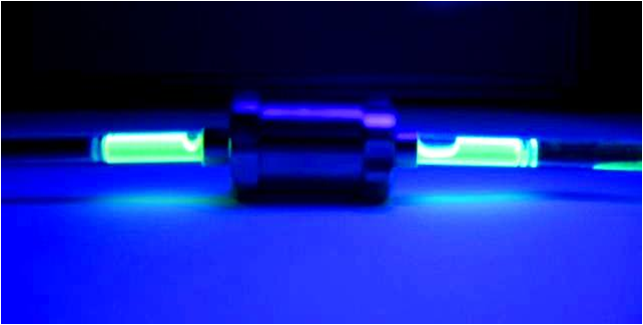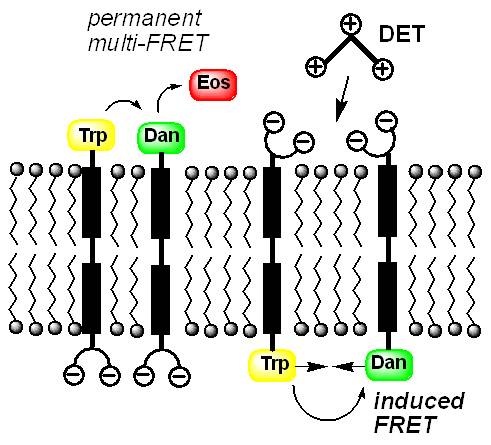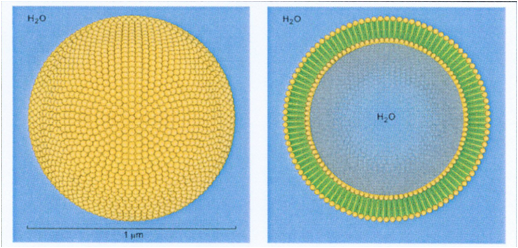Research
Artificial signal transduction with messenger compounds:
Signal transduction across membranes serves the dual purpose to mediate and trigger numerous essential processes in living cells. In spite of its fundamental importance no artificial model existed, until few years ago, C. Hunter’s seminal work demonstrated how the principle of receptor tyrosine kinases could be transferred to simple bisamphiphiles in liposomes. We have further developed this concept and created more demanding unsymmetrical transmembrane building blocks with a receptor head and an emitting tail unit.
The unpolar membrane-spanning part is represented by a double steroid derivative, while a bisphosphonate head serves as ammonium recognition unit. At the opposite end a fluorescence donor and acceptor provide a potential FRET signal, or alternatively a thiol and a respective disulfide prepare the SN2 displacement of a second messenger. In liposomes with both transmembrane building blocks signal pairs are residing in both possible relative orientations. If the primary messenger diethylenetriammonium chloride is added dropwise to the fluorescence donor/acceptor system, a productive clustering of donor an acceptor units occurs and leads to an intense FRET, which can even be rendered visable to the naked eye in the presence of eosine.
In the SN2-system addition of the primary messenger triggers an SN2 reaction, with the thiol nucleophile attacking the disulfide and displacing the second messenger thiopyridine, which is quantitatively detected by UV-vis spectroscopy. Subsequent addition of a water-soluble reducing agent provides experimental evidence for the chemical integrity of all exterior disulfides, which were not touched when the signal was transmitted into the liposome interior.
We are currently developing more advanced signaling units, which react with higher sensitivity on the primary messenger. To this end, we intend to effect a preorientation of the bolaamphiphilic transmembrane building blocks in the liposome as well a signal reinforcement in the liposome interior. With such optimized units we would like to begin experiments in living cells.
References
- Entirely Artificial Signal Transduction With a Primary Messenger. K. Bernitzki, M. Maue, T. Schrader, Angew. Chem. 2009, 48, 8001-8005.
- Artificial Signal Transduction with a Primary and Secondary Messengers. K. Bernitzki, M. Maue, T. Schrader, Chem. Eur. J. 2012, 18, 13412-13417.




